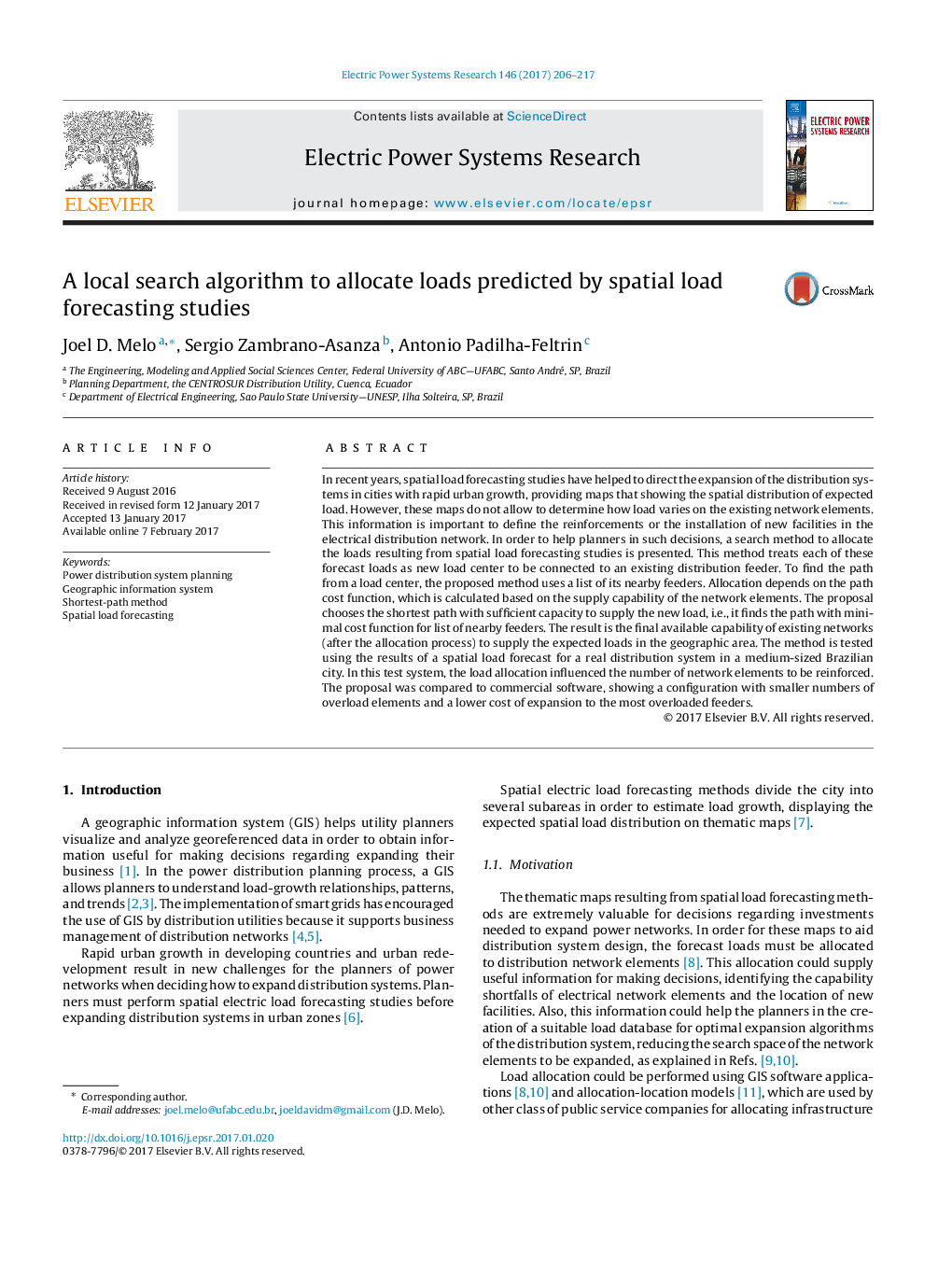| Article ID | Journal | Published Year | Pages | File Type |
|---|---|---|---|---|
| 5001121 | Electric Power Systems Research | 2017 | 12 Pages |
â¢Allocate the loads resulting from spatial load forecasting studies.â¢The shortest path with sufficient capacity to supply the new load.â¢The load allocation influenced the number of elements to be reinforced.â¢The computational time needed is similar to that of specialized software.
In recent years, spatial load forecasting studies have helped to direct the expansion of the distribution systems in cities with rapid urban growth, providing maps that showing the spatial distribution of expected load. However, these maps do not allow to determine how load varies on the existing network elements. This information is important to define the reinforcements or the installation of new facilities in the electrical distribution network. In order to help planners in such decisions, a search method to allocate the loads resulting from spatial load forecasting studies is presented. This method treats each of these forecast loads as new load center to be connected to an existing distribution feeder. To find the path from a load center, the proposed method uses a list of its nearby feeders. Allocation depends on the path cost function, which is calculated based on the supply capability of the network elements. The proposal chooses the shortest path with sufficient capacity to supply the new load, i.e., it finds the path with minimal cost function for list of nearby feeders. The result is the final available capability of existing networks (after the allocation process) to supply the expected loads in the geographic area. The method is tested using the results of a spatial load forecast for a real distribution system in a medium-sized Brazilian city. In this test system, the load allocation influenced the number of network elements to be reinforced. The proposal was compared to commercial software, showing a configuration with smaller numbers of overload elements and a lower cost of expansion to the most overloaded feeders.
